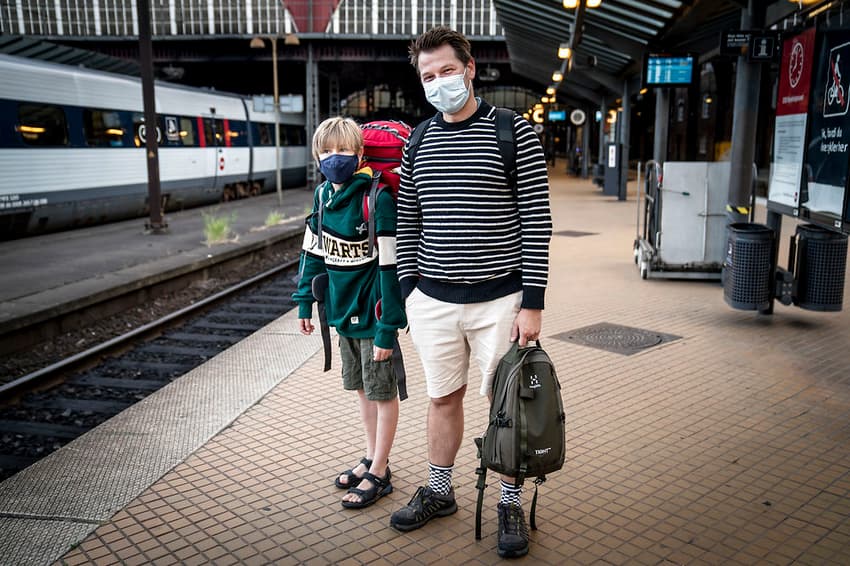Denmark’s face mask requirement comes into force: these are the rules you need to know

A requirement to wear face masks on all public transport in Denmark comes into effect on Saturday, August 22nd.
Although face masks are not obligatory prior to that date, health authorities are already recommending their use on busy public transport.
The following rules and recommendations apply from Saturday August 22nd:
-
Face masks must be worn on all public transport in Denmark at all times
-
Visors may be used instead of face masks
-
The requirement applies to passengers over the age of 12
-
The requirement applies to all public transport in Denmark including ferries, regional buses, city buses, taxis, Metro trains, light rail (Letbane) trains and railways, including at stations.
-
Staff are also required to wear face masks unless they are in areas with no passenger access.
-
Refusal to wear a mask will result in the passenger being asked to leave the public transport in question. Further refusal can result in police involvement.
-
Some adults are exempted from the requirement for health reasons. These include persons with breathing difficulties, lower awareness levels, or persons with physical or mental conditions which prevent them from being able to remove their own face masks.
-
People in categories considered high-risk for coronavirus are advised to wear face masks in all public places in which it is not possible to maintain a social distance of two metres and whenever they are with people they do not live with. This includes senior citizens, people who live in nursing homes, people who are severely overweight, people with chronic illnesses and people with no fixed place of residence.
-
Face masks should be removed if the wearer experiences serious discomfort or difficulty breathing.
-
The face mask may be removed in order to eat, drink or ingest medicine.
-
Face masks may be removed to communicate with people who lip-read.
-
The face mask may be removed if required by police for identification purposes.
Sources: DR, Sundhedsstyrelsen
READ ALSO: Denmark makes masks compulsory on public transport
Comments
See Also
Although face masks are not obligatory prior to that date, health authorities are already recommending their use on busy public transport.
The following rules and recommendations apply from Saturday August 22nd:
- Face masks must be worn on all public transport in Denmark at all times
- Visors may be used instead of face masks
- The requirement applies to passengers over the age of 12
- The requirement applies to all public transport in Denmark including ferries, regional buses, city buses, taxis, Metro trains, light rail (Letbane) trains and railways, including at stations.
- Staff are also required to wear face masks unless they are in areas with no passenger access.
- Refusal to wear a mask will result in the passenger being asked to leave the public transport in question. Further refusal can result in police involvement.
- Some adults are exempted from the requirement for health reasons. These include persons with breathing difficulties, lower awareness levels, or persons with physical or mental conditions which prevent them from being able to remove their own face masks.
- People in categories considered high-risk for coronavirus are advised to wear face masks in all public places in which it is not possible to maintain a social distance of two metres and whenever they are with people they do not live with. This includes senior citizens, people who live in nursing homes, people who are severely overweight, people with chronic illnesses and people with no fixed place of residence.
- Face masks should be removed if the wearer experiences serious discomfort or difficulty breathing.
- The face mask may be removed in order to eat, drink or ingest medicine.
- Face masks may be removed to communicate with people who lip-read.
- The face mask may be removed if required by police for identification purposes.
Sources: DR, Sundhedsstyrelsen
READ ALSO: Denmark makes masks compulsory on public transport
Join the conversation in our comments section below. Share your own views and experience and if you have a question or suggestion for our journalists then email us at [email protected].
Please keep comments civil, constructive and on topic – and make sure to read our terms of use before getting involved.
Please log in here to leave a comment.